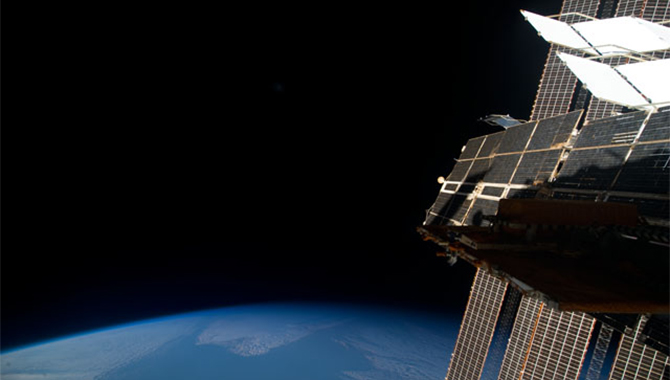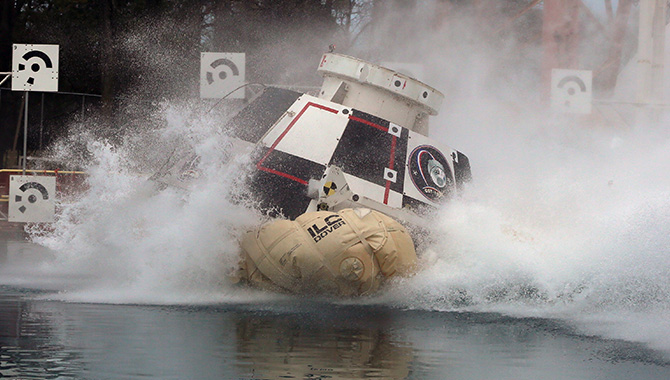
The largest part of the James Webb Space Telescope observatory is the Sunshield, which is roughly the length of a tennis court. It protects the telescope’s sensitive infrared instruments, which require extremely cold temperatures to function.
Photo Credit: NASA/Chris Gunn
With less than four years until launch, the Government Accountability Office (GAO) advises further cost risk analysis for the James Webb Space Telescope (JWST).
How were the first stars formed? How did the galaxies evolve? In four short years, the JWST is scheduled to launch into space in order to answer these and many other questions. The large infrared-optimized space telescope will look back more than 13.5 billion years to witness the formation of structures in the universe.
To perform its extraordinary task, the JWST will be 100 times more sensitive than the Hubble Space Telescope. The spacecraft features a 6.5-meter primary mirror along with several highly sophisticated instruments, some of which require extremely cold temperatures to function. It is one of the most complex projects in NASA history.
Between now and launch, the project is immersed in a multiyear integration and testing process. The project team has stated that the JWST is on schedule and on budget. However, in 2014 the project experienced delays on every element and major subsystem. These delays have not impacted the overall schedule but, according to the GAO, they have endangered the schedule reserve. This means there is less flexibility in the schedule for dealing with future problems, should they arise. The project also faces potential short-term challenges to its cost reserves. These schedule- and cost-reserve issues are of particular concern because the bulk of the integration and testing for the project still lies ahead.
In order to fully assess potential risks, the GAO recommends that the project develop an updated cost risk analysis, which will be used to validate the project’s budget. The current analysis does not include many of the potential risks that have been identified since 2011. The GAO encourages the project to follow the best practice of regularly updating the cost risk analysis. It also recommends that NASA further specify the criteria and process for evaluating the performance of the JWST contractors.
The JWST project has agreed to conduct a new cost risk analysis. This will provide a more up-to-date basis for determining whether the primary contractor is at risk of exceeding the budget going forward. They have also agreed to modify performance evaluation plans to reflect GAO recommendations.









